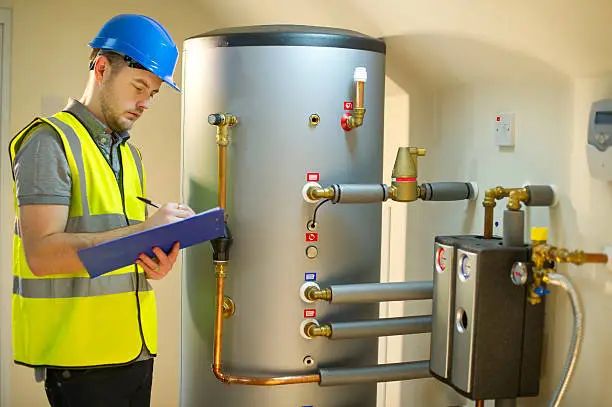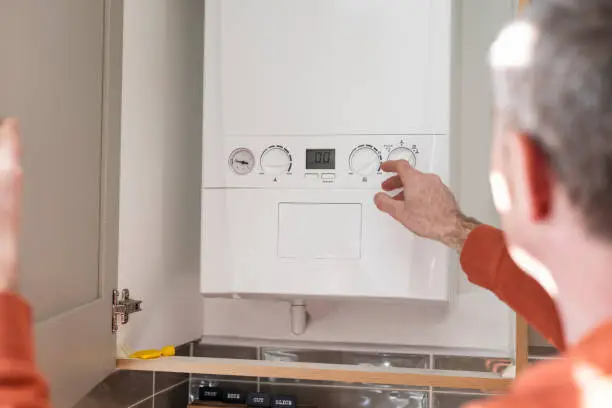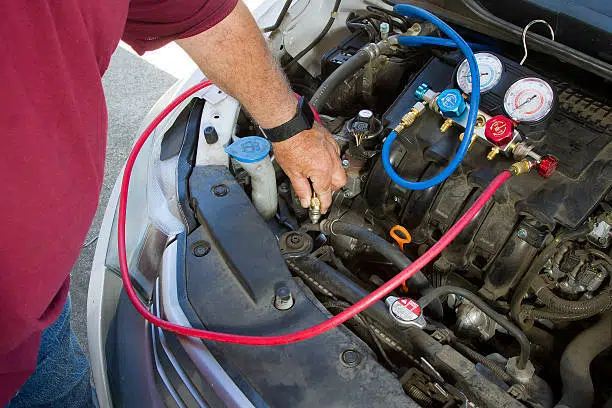
Table of Contents
- Why Paying Attention to Your Water Heater Matters
- Common Signs That Your Water Heater Element Is Burned Out
- Testing the Water Heater Element
- Repairing a Water Heater with a Burned-Out Element
- The Importance of Regular Maintenance
- When to Call HVAC Service Solutions for Help
- Final Thoughts: Stay Ahead of Water Heater Problems
- FAQ
When your water heater is not working, you’re not just facing cold showers — you’re also dealing with a household disruption that can throw off your day. If the water heater is producing lukewarm water or no hot water at all, one likely culprit is a burned-out water heater element. But how do you know for sure? In this article, we’ll walk through the signs of a burned-out water heater element, how to test it, and what steps you can take to get your water heater running smoothly again.
Why Paying Attention to Your Water Heater Matters
Your water heater works behind the scenes, keeping your home comfortable, especially during Canada’s colder months. It’s easy to take hot water for granted—until it’s gone. One of the most common issues homeowners face with their water heaters is a malfunctioning water heater element, which is responsible for heating the water in your tank. When this component burns out, it can lead to inconsistent water temperatures or no hot water at all.
Knowing the signs of a failing water heater element and how to address it can save you time, frustration, and potentially money on more costly repairs down the line. Let’s dive into what to watch for.
Common Signs That Your Water Heater Element Is Burned Out

The first step to solving any problem is recognizing it. With a water heater, the symptoms of a burned-out water heater element often show up in how your water behaves:
- Fluctuating Water Temperature: If your water goes from hot to cold without warning, or if you only get lukewarm water no matter how high the thermostat is set, the water heater element could be burned out.
- Hot Water Runs Out Quickly: If you’re running out of hot water faster than usual, this is another sign. A properly functioning water heater element keeps water consistently hot, but a faulty one can’t maintain the temperature.
- No Hot Water at All: In more severe cases, you might not have any hot water. If the element is completely fried, the water in your heater will stay cold.
- Unusual Noises: Listen for strange sounds like hissing, crackling, or popping. These noises often indicate mineral buildup around the water heater element, making it less efficient and more prone to failure.
- Circuit Breaker Keeps Tripping: If your water heater trips the circuit breaker frequently, it could mean the water heater element has burned out and is causing a short circuit.
If you notice one or more of these signs, it’s time to test your water heater element to see if it needs replacing.
Find out how much it costs to install a new water heater in Canada in our previous article.
Testing the Water Heater Element
So, you’ve noticed some of the signs that point to a burned-out water heater element. What now? The best way to know for sure is by testing the water heater element itself. Don’t worry—it’s not as complicated as it sounds, and you don’t need to be a seasoned electrician to do it. You just need a multimeter and a little bit of caution.
Before you do anything, safety first. Always turn off the power to your water heater at the circuit breaker. Water and electricity are a dangerous combination, so this is non-negotiable.
Once the power is off, you’ll need to locate the heating elements. Most residential water heaters have two: one at the top and one at the bottom. You’ll find them behind access panels on the side of the heater. Remove the panels and then the insulation beneath them to expose the elements.
Using your multimeter, set it to the lowest setting for ohms resistance. Place one probe on a terminal of the water heater element and the other probe on the second terminal. If the meter shows a reading of zero or a very low number, your element is fine. But if you get no reading at all, it means the water heater element is burned out and needs to be replaced.
Repairing a Water Heater with a Burned-Out Element
If you’ve determined that the water heater element is burned out, the next step is deciding whether you want to replace it yourself or call a professional. Repairing a water heater element isn’t the most complex DIY job, but it does involve working with electrical components and draining the tank, so it’s not for everyone.
If you’re feeling confident and want to tackle the replacement on your own, here’s a brief rundown of what’s involved:
- Turn off the power and water: Again, make sure the power is completely off at the breaker. Then, turn off the cold water supply to the heater.
- Drain the tank: Connect a garden hose to the drain valve at the bottom of the tank and open the valve to let the water flow out. This step can take a bit of time, depending on the size of your tank.
- Remove the old element: Once the tank is drained, use an element wrench to unscrew the burned-out element. Be prepared for some residual water to come out when you remove it.
- Install the new element: Screw the new element into place and tighten it securely. Be careful not to overtighten, as this can damage the threads.
- Refill the tank and restore power: Close the drain valve, turn the water supply back on, and let the tank fill before restoring power at the breaker.
If this sounds like a bit too much, that’s okay. Not everyone is comfortable working with water heaters, and safety should always come first. Calling a professional HVAC technician ensures the job gets done right and that your water heater is in good hands.
The Importance of Regular Maintenance

Replacing a burned-out water heater element is one thing, but preventing the problem in the first place is even better. Regular maintenance can keep your water heater running efficiently and extend the life of the components. Most issues with heating elements stem from mineral buildup in the tank, especially in areas with hard water. This sediment collects around the element, reducing its ability to heat the water and increasing the risk of burnout.
Flushing your water heater once a year can help remove this sediment. It’s a relatively simple process but one that’s often overlooked by homeowners. During a routine flush, the tank is drained to remove built-up minerals, and the heating elements are inspected for any signs of wear or damage.
Scheduling a yearly inspection with a professional HVAC technician can also go a long way toward preventing future problems. An experienced technician will not only flush the tank and check the elements but also ensure that all other parts of the water heater are in good working order.
When to Call HVAC Service Solutions for Help
So what to do if your water heater element is burned out?
If you’re not comfortable testing or replacing a water heater element on your own, or if you’re experiencing persistent problems with your hot water, it’s time to bring in the pros. Our team at HVAC Service Solutions specializes in diagnosing and repairing water heaters, including burned-out elements.
We understand how frustrating it can be to deal with a faulty water heater, especially in Canada’s chilly climate, which is why we’re committed to providing fast, reliable service to get your system back up and running as quickly as possible.
Whether you need a quick repair, a full replacement, or just want to schedule routine maintenance, we’re here to help. Don’t let a burned-out water heater element leave you out in the cold—give us a call today and we’ll take care of the rest.
Final Thoughts: Stay Ahead of Water Heater Problems
A burned-out water heater element is one of the most common reasons your water heater might stop producing hot water, but it’s also one of the easiest to fix—especially if you catch it early. Keep an eye on the signs, test the element if necessary, and don’t hesitate to reach out for professional help when you need it.
Maintaining your water heater with regular inspections and flushing can prevent most major problems, saving you both time and money in the long run. And if you ever find yourself unsure of what’s wrong with your water heater, HVAC Service Solutions is just a phone call away.
Frequent Asked Questions
What are the symptoms of a burned-out water heater element?
A burned-out water heater element will often cause your water heater to produce lukewarm or cold water, even when the thermostat is set to a high temperature. You might also notice the hot water runs out faster than usual. In severe cases, you’ll have no hot water at all. Strange noises like hissing, crackling, or popping from the tank can also indicate the element is damaged. Finally, if your water heater keeps tripping the circuit breaker, that could mean the element has short-circuited.
How can I test if my water heater element is burned out?
To test your water heater element, you’ll need a multimeter. First, turn off the power to the water heater at the circuit breaker for safety. Access the heating elements by removing the access panels and insulation. Set your multimeter to the lowest ohm setting, then place the probes on each terminal of the element. If the meter shows no reading or infinity, the element is burned out. If it shows resistance, the element is still functional.
Can I replace a burned-out water heater element myself?
Yes, replacing a burned-out water heater element is a task many DIY enthusiasts can handle, but it requires working with electrical components, so safety is crucial. You’ll need to turn off both the power and water supply, drain the tank, and use an element wrench to remove the faulty element. After installing the new one, refill the tank and restore power. If you’re not comfortable with electrical work, it’s best to hire a professional HVAC technician to handle it.
How long do water heater elements typically last?
On average, water heater elements last about 6 to 10 years, depending on factors like water quality and how well the unit is maintained. In areas with hard water, mineral deposits can build up around the element, causing it to burn out faster. Regular maintenance, such as flushing the tank to remove sediment, can help prolong the life of the element.
What causes a water heater element to burn out?
Water heater elements can burn out due to a variety of reasons. The most common cause is sediment buildup, especially in areas with hard water. Minerals collect around the element, causing it to overheat and eventually fail. Electrical issues, such as short circuits, can also damage the element. Additionally, setting the thermostat too high can cause the element to work harder than necessary, shortening its lifespan.
What should I do if my water heater element is burned out?
If you suspect your water heater element is burned out, the first step is to test it using a multimeter. If the element is faulty, you can either replace it yourself or hire a professional HVAC technician to do the job. Be sure to turn off the power and water supply before beginning any work on the heater. If you’re uncomfortable with electrical tasks, it’s safer to contact a professional to handle the replacement.
Can a burned-out water heater element affect my energy bill?
Yes, a burned-out water heater element can lead to higher energy bills. If one of the elements fails, the other has to work harder to maintain the water temperature, which uses more energy. If both elements are partially or fully burned out, the heater may run continuously without effectively heating the water, driving up your electricity costs without providing the hot water you need.
How can I prevent my water heater element from burning out?
Preventing a water heater element from burning out involves regular maintenance. Flushing the tank annually removes sediment buildup that can insulate the element and cause it to overheat. Installing a water softener can help reduce mineral deposits in areas with hard water. Additionally, setting the thermostat to a moderate temperature (120°F is recommended) can prevent the element from overworking, extending its lifespan.
Is it better to replace the water heater or just the element?
If the water heater is relatively new and in good condition, replacing just the burned-out element is usually the most cost-effective solution. However, if the water heater is nearing the end of its lifespan (typically 10-15 years) or has other issues, it might be worth considering replacing the entire unit. A professional HVAC technician can inspect your system and advise you on the best course of action.
How much does it cost to replace a burned-out water heater element?
The cost to replace a water heater element can vary depending on whether you do it yourself or hire a professional. A new element typically costs between $20 and $50. If you hire a technician, labor costs will add to the price, and you can expect to pay anywhere from $150 to $300 for the entire replacement job. Keep in mind that regular maintenance can help avoid the need for premature replacements and additional expenses.
Share



















